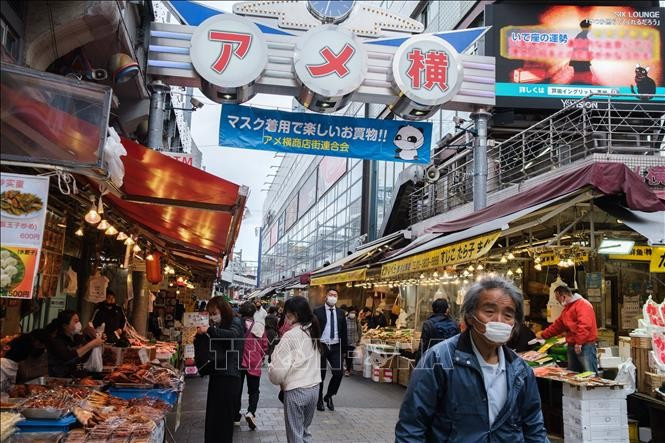Last weekend, the Japanese government released data showing that the consumer price index (CPI) in July, the economy’s main inflation measure, rose by 3.1% compared to the same period last year.
According to data from Japan’s Ministry of Internal Affairs and Communications, if excluded energy products from the basket of goods, the CPI increase would be 4.3% in July, 0.1 percentage points higher than in June.
The reason for escalating inflation was the price hike of food and durable goods by 9.2% and 6% respectively, in addition to a 15.1% rise in the price of accommodation during the summer travel season.
Analysts say that persistently high inflation is eroding the country’s economy and causing major financial challenges. Kyodo news agency’s analysis on August 19 showed that Japan’s spending to help the economy reduce the shocks of the COVID-19 pandemic and to deal with inflation, will likely total about 68.5 trillion JPY (471 billion USD), in the four years to fiscal 2023.
With most of the funding coming from debt issuance, the government’s goal of “restoring fiscal health” is taking a backseat. Meanwhile, the urgent task for the Japanese government today is to carry out spending reforms. Such huge spending is also creating significant financial problems for Japan.
Kyodo used data submitted by the private-sector members of a key government panel on fiscal policy to show the country’s deteriorating fiscal health.
Accordingly, the relevant figure worsened by between 1.7 and 5.2 percentage points during the four years, compared with a scenario of no such additional spending on COVID and inflation relief measures. The increase in spending has led to Japan’s debt approaching 1,100 trillion JPY in fiscal 2023, nearly twice the size of the economy.
Apart from the inflation challenge, the Japanese economy also faces other obstacles such as weak exports and declining workers’ incomes. Japan’s exports in July fell by 0.3% year-on-year, marking the first reduction in more than two years, the Finance Ministry said on August 17.
Meanwhile, imports also fell by 13.5% to 8.8 trillion JPY, resulting in Japan’s July trade deficit of 78.7 billion JPY. Japan’s import and export sector is gloomy due to the deceleration in the global economy, in which China’s economic growth, Japan’s main trading partner, is also struggling.
The slow economic recovery and high inflation create a significant negative impact on the lives of Japanese people, in the context that real wages continue to drop.
The Japanese Ministry of Health, Labour and Welfare has just released a report saying that the real wages of workers in June 2023 decreased by 1.6% compared to the same period last year, being the 15th consecutive reduction.
Previously, in April 2023, the real wages of Japanese workers shrank by 3% over the same period last year, recording the 13th consecutive month of decline. Prime Minister Fumio Kishida recently called for companies to raise wages.
Japan’s consumer inflation hit a 41-year high of 4.2% in January 2023, as businesses passed the rising cost of raw materials, packaging and shipment onto products and services, analysts say. Besides, a weaker yen has also pushed up import costs, increasing consumer prices.
It is worrisome that the risk of inflation will continue to cling and hinder Japan’s economic recovery in the coming time. Daisuke Iijima, an analyst at Teikoku Databank, forecasts inflation will pick up as food prices continue to rise in the coming months and energy costs could rise as government subsidies will end in September.
High inflation in Japan is contrary to the general cooling down price trend in other major economies such as the US, European Union, and China. This is a big challenge for the Japanese government in macroeconomic management in the last months of this year.
Once inflation is high, it will impede the government from implementing measures to stimulate growth and restore the economy, as well as causing more difficulties in ensuring social security.
















